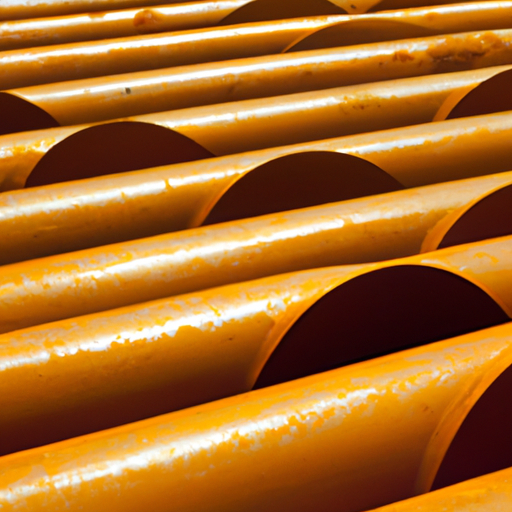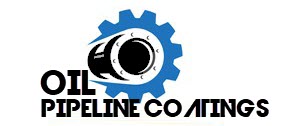
What You Need to Know About the Different Types of Oil Pipeline Coatings
Oil pipelines are an important part of the energy industry and are used to transport crude oil from one location to another. To ensure the longevity and efficiency of these pipelines, it is important to use the right type of coating. There are several different types of oil pipeline coatings available, each with its own advantages and disadvantages.
Epoxy coatings are one of the most popular types of coatings used for oil pipelines. This type of coating is resistant to corrosion and provides excellent protection from environmental elements. Epoxy coatings are also relatively easy to apply and are often used in areas where there is a high risk of corrosion.
Polyurethane coatings are another option for oil pipelines. These coatings are highly durable and provide excellent protection from the elements. They are also resistant to abrasion and can withstand high temperatures. They are often used in areas where there is a high risk of corrosion and extreme weather conditions.
Polyethylene coatings are designed to be lightweight and provide superior protection from corrosion. They are also resistant to abrasion and can withstand high temperatures. These coatings can be applied quickly and easily, making them a popular choice among oil pipeline operators.
Fusion-bonded epoxy coatings are a type of coating that is applied to the interior of the pipeline. This type of coating is highly resistant to corrosion and provides excellent protection from the elements. It is also highly resistant to abrasion and can withstand high temperatures. Fusion-bonded epoxy coatings are often used in areas where there is a high risk of corrosion and extreme weather conditions.
Finally, cathodic protection coatings are designed to protect pipelines from corrosion by providing a barrier between the pipe and the environment. These coatings are highly effective and can provide years of protection from corrosion. They are often used in areas where there is a high risk of corrosion and extreme weather conditions.
Each type of oil pipeline coating has its own advantages and disadvantages. It is important to consider the specific needs of the pipeline and the environment in which it will be used when selecting a coating. By taking all of these factors into consideration, the right type of coating can be chosen to ensure the longevity and efficiency of the pipeline.
Comparing the Benefits of Internal and External Pipeline Coatings
Internal and external pipeline coatings are used to protect pipelines from corrosion and other external factors. Both types of coatings have their own benefits and drawbacks, and it is important to understand the differences between them in order to choose the best option for a particular pipeline.
Internal pipeline coatings are applied on the inside of the pipe and can provide superior protection against corrosion caused by the chemicals or other substances that the pipeline carries. They also reduce the risk of fouling and blockage due to debris, which can lead to expensive repairs. Furthermore, internal coatings are relatively easy to apply and can provide long-term protection.
External pipeline coatings are applied to the outside of the pipeline and provide protection from external factors such as UV radiation, temperature changes, and corrosion caused by soil or water. They also provide an extra layer of protection from mechanical damage, such as impacts caused by construction or excavation. Moreover, external coatings are often used in combination with internal coatings for an extra layer of protection.
Both internal and external pipeline coatings have their own advantages and disadvantages, and the best option for a particular pipeline depends on its environment, use, and other factors. When choosing a coating, it is important to consider the cost of the coating, the type of protection it provides, and any potential maintenance requirements. Ultimately, the choice of coating should be based on a careful analysis of all the factors involved.
Exploring the Different Methods Used for Applying Oil Pipeline Coatings
Oil pipeline coatings are essential components of any oil pipeline infrastructure. They protect the pipe from corrosion, water damage, and other external factors. In order to ensure the longevity and performance of the pipeline, these coatings must be properly applied. There are a number of different methods used for applying oil pipeline coatings, and each has its own advantages and disadvantages.
One of the most common methods of applying oil pipeline coatings is by using a brush or roller. This method is relatively quick and inexpensive, and it can be used to apply relatively thin coatings. However, it is not suitable for pipelines that are exposed to harsh weather or high levels of stress, as the coating may not adhere properly. In addition, this method is not suitable for applying thicker coatings.
A more advanced method for applying oil pipeline coatings is powder coating. In this method, a special powder coating is applied to the pipe using a spray gun. This method is more expensive than using a brush or roller, but it is also much faster and results in a more uniform finish. This method is also suitable for applying thicker coatings, and is ideal for pipelines that are exposed to high levels of stress or harsh weather.
Other methods for applying oil pipeline coatings include extrusion coating and spray painting. Extrusion coating involves applying a melted coating material to the pipe using an extruder, and then cooling the material to form a protective coating. Spray painting is similar to powder coating, but instead of using a spray gun, a compressed air sprayer is used to apply the coating. This method is ideal for applying thin and even coatings, but it is not suitable for applying thicker coatings.
In addition to these methods, there are a number of other techniques that can be used to apply oil pipeline coatings. For example, liquid coatings can be applied using an airless sprayer, or a solvent can be used to penetrate the surface of the pipe before the coating is applied. Each of these methods has its own advantages and disadvantages, and the best method for a particular application will depend on the specific requirements of the project.
Whatever method is used for applying oil pipeline coatings, it is important to ensure that the coating is applied properly. If the coating is not applied correctly, it can lead to premature wearing and corrosion of the pipe, resulting in costly repairs or replacements. Therefore, it is essential to select the right method for each application in order to ensure the longevity and performance of the pipeline.
Investigating the Impact of Oil Pipeline Coating on the Environment
Oil pipelines are an essential part of the global energy infrastructure, responsible for transporting crude oil from production sites to refineries and other facilities. To ensure the safety and efficiency of the operation, it is important that the pipelines are adequately coated. However, the use of pipeline coatings can also have an impact on the environment, and it is essential to understand the potential effects so that appropriate steps can be taken to minimize any adverse impacts.
The primary environmental concern with oil pipeline coatings is that the materials used can leach pollutants into soil and water sources. These pollutants, which range from volatile organic compounds to heavy metals, can have a significant detrimental effect on local ecosystems. In addition, there is a risk of erosion and corrosion for pipelines not properly coated, leading to the release of hazardous materials into the environment.
To reduce the environmental impact of oil pipeline coatings, it is important to choose materials with low volatility and low toxicity. This is especially true for coatings used to line the inside of the pipeline, as these will come into direct contact with the oil and any pollutants it contains. It is also essential to ensure that the coating is applied in a manner that minimizes the risk of erosion or corrosion.
In addition to choosing the right materials and application methods, it is also important to consider the environmental effects of any waste generated during the coating process. For instance, many coatings release hazardous solvents during application, and these must be safely collected and disposed of to avoid their release into the environment.
Ultimately, the environmental impacts of oil pipeline coatings can be minimized through careful selection of materials and application methods. By taking these steps, it is possible to ensure that the pipeline is adequately protected while also reducing the risk of environmental damage.
Understanding the Regulations Surrounding the Use of Oil Pipeline Coatings
Oil pipelines are an important part of the global energy infrastructure, as they are used to transport oil from one location to another. As such, it is important to ensure that these pipelines are properly maintained and protected from corrosion and other damage. This is done by using a protective coating, which is applied to the outside of the pipeline to create a barrier between the metal and the environment.
The regulations surrounding the use of oil pipeline coatings vary from country to country, depending on the local laws and regulations. Generally speaking, the regulations aim to ensure that the coatings used are of a high quality and that they are applied in a safe and effective manner.
In the United States, the regulations governing the use of oil pipeline coatings are primarily set by the Pipeline and Hazardous Materials Safety Administration (PHMSA). This organization is responsible for overseeing the transportation of hazardous materials, including oil, and it sets standards for the safe transportation of these materials. In particular, the PHMSA issues regulations on the use of coatings, specifying the types of coatings that must be used, the thickness of the coating, and the application method.
In addition to the PHMSA regulations, a number of other organizations also have standards and guidelines for the use of oil pipeline coatings. The American Petroleum Institute (API) provides a number of standards and guidelines for the use of coatings, including the API 5LX standard, which provides guidance on the selection and application of protective coatings. The National Association of Corrosion Engineers (NACE) also has a number of standards related to the use of protective coatings, including the NACE SP0169 standard, which provides guidance on the selection and application of coatings for oil pipelines.
Finally, it is important to note that the regulations governing the use of oil pipeline coatings may also vary depending on the type of pipeline being used. For example, pipelines that are used to transport hazardous liquids may have different coating requirements than those used for transporting non-hazardous liquids.
By understanding the regulations surrounding the use of oil pipeline coatings, companies can ensure that their pipelines are properly protected and that they are in compliance with all applicable regulations. This will help to ensure that pipelines are safe to use and that they can continue to transport oil for many years to come.
